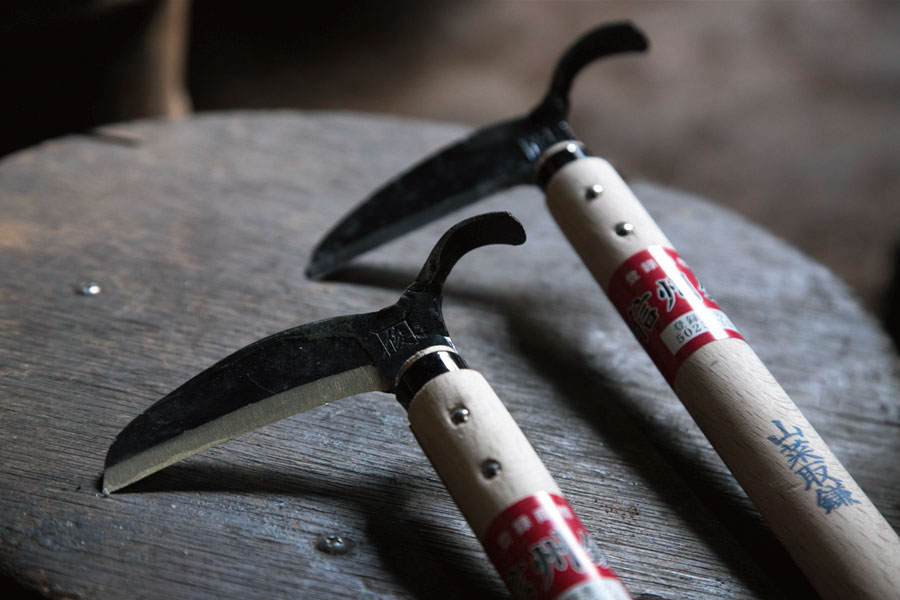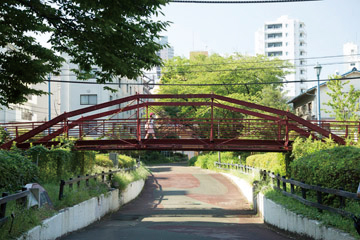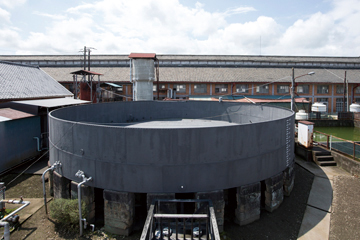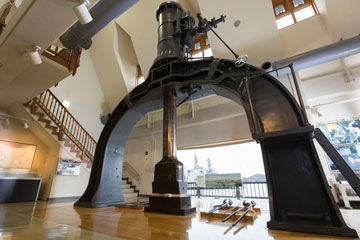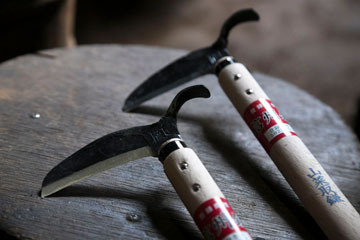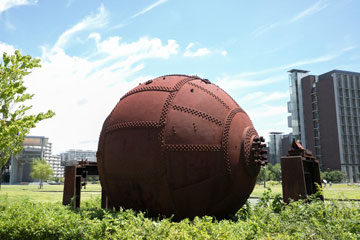2019 METAL CULTURE Shinano
Forged Cutting Tools
Value One Winter 2019 No.63
A Traditional Craft with a 450-Year History
Shinano is a town in northern Nagano, the old name of which is Shinshu. It is famous for the Kurohime Highlands and the manufacture of tools such as sickles. The latter has thrived here for centuries. In fact, Shinshu uchihamono—forged cutting tools—have been designated a national traditional craft.
These cutting tools are formed by repeatedly beating red-hot steel into shape. Each tool is produced using techniques derived from the blacksmithing of Japanese swords, so these handmade blades maintain their sharpness. There are other historic production areas all over the country, including Echizen (Fukui), Sakai (Osaka) and Miki (Hyogo), and they continue to make tools essential for everyday life, such as knives, sickles and scissors.
-
The history of Shinshu cutting tools goes back around 450 years to the Warring States Period. It was during that time that Takeda Shingen and Uesugi Kenshin clashed during the Battles of Kawanakajima.
These battles took place over a period of more than a decade, and swordsmiths regularly traveled to and from the region to repair swords and armor. The people of Shinano learned the skills by assisting with the smithing, and used them to make sickles and other farming tools. The area also flourished as a post town on the Hokkoku Road connecting Shinshu with the Sea of Japan. For that reason, it was reportedly easy to obtain steel—the material for making cutting tools—from the Izumo area, which was famous for producing steel with tatara (furnaces), via Naoetsu Port. In the Meiji Era (1868–1912), the production and sales of the cutting tools were separated, and a wholesale system was established. After this, the Shinshu sickle became widely known throughout the country because the products were transported via road routes. -
-
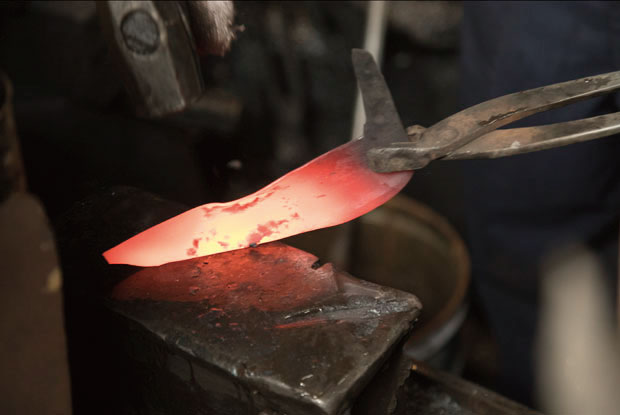
- Hammering hot steel into shape
-
The distinctive characteristic of Shinshu sickles is their unique structure, which causes the cut blades of grass to fall toward the worker, while the inward curve of the sickle blade ensures a good cut even when the blade is thin. Toshio Ishida, a traditional craftsman and the head of the Shinshu Uchihamono Manufacturers Association, says: “Shinshu sickles are sturdy and easy to use even though they have a single thin-edged blade. Various things are made at the customer’s request, such as billhooks for bamboo work. As long as you know the basic techniques, you can make anything.”
In recent years, however, competition from cheaper foreign-made products has cut sickle demand significantly. There were around sixty craftsmen at the industry’s peak; now there are only ten or so, and they are aging. Ishida became his father’s apprentice at the age of sixteen, and has honed his skills over many years. Lately he has been working on ways to reduce the workload and help even inexperienced workers do the job. He hopes to pass the method of producing traditional Shinshu cutting tools on to the next generation so the tradition does not die out.
